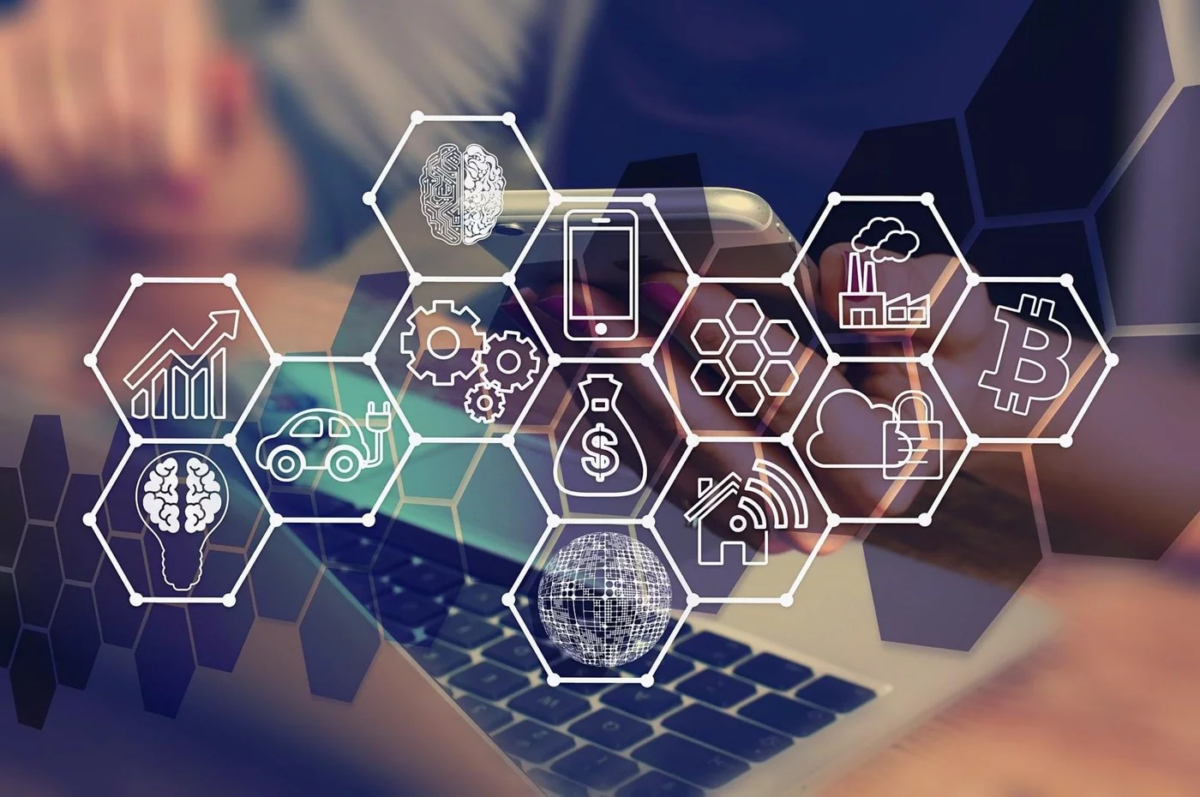
Since the 1950’s the world has slowly but surely turned digital maturity. With the invention of the semiconductor and the forming of the so-called, “Silicon Valley“, an unstoppable digital transformation was ignited. Intel’s founder Gordon Moore (1965) published an article which turned into what is today known as, “Moore’s Law“, explaining the exponential nature of the digital realm.
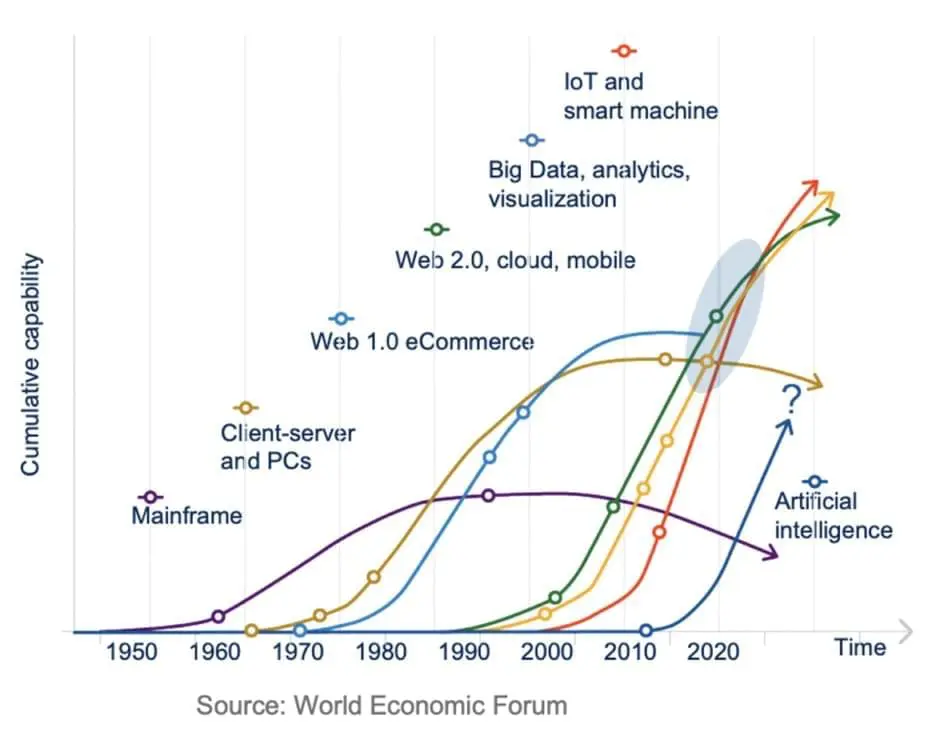
But digital is not only about technology. It is about work ethic, self-improvement, and playtime. Day-to-day; life. Everything we use, create, share, and love; every day. Digital affects every industry, every business, and every city in every nation.
The Three Phases of Digital
We must distinguish three terms which build on top of each other;
First, digitization: the very basic step of turning anything analogue into digital.
Second, digitalization: which changes the way we work or live with digital novelties.
Third, digital transformation: reimagining every aspect of our private and professional lives using digital capabilities for sustainable, self-determined success.
First, digitization.
Let’s explain these three steps with some commonly known examples. This was the first step in the 60’s and 70’s when the integrated circuit became available. Slowly but surely, we transformed analogue practices into digital forms. Letters were converted into faxes. The telegraphs of yesterday first turned into SMS messages, then into today’s instant messages,delivered in light speed from mobile device to mobile device, virtually for free.

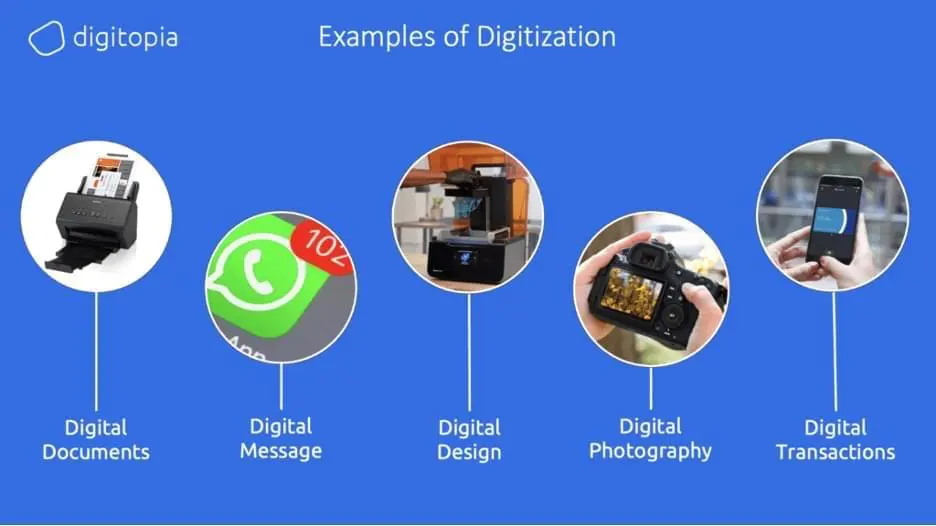
Second, digitalization.
Let’s continue by first defining the term. “Digitalization” is using digital capabilities to change how we work. The global and unstoppable expansion of the internet gave digital a completely new face with a rich set of capabilities.
Shopping online grew exponentially and still has not peaked. The COVID-19 pandemic gave online shopping a completely new meaning by delivering basic needs, such as food, water, medicine, and other supplies to your doorstep.
Khan Academy and MOOC has enabled millions of students reach content and courses, otherwise impossible to access. This could easily be called the democratisation of learning and education.
Factories, experiences, and even healthcare are enabled and augmented with digital technologies and delivered via digital channels. Mainframe computers, minicomputers, personal computers, enterprise applications, the internet, and then the mobile phone revolution, have changed basically everything. These capabilities have enabled new ways of delivery, distribution, management, and execution in every business model and industry.

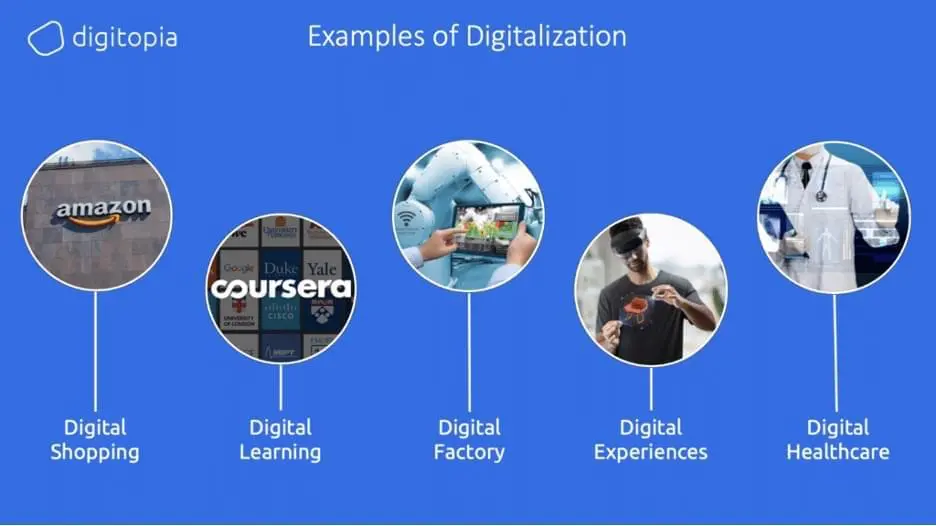
The Third, and Ultimate Step (For Now): Digital Transformation.
Digitopians define digital transformation as:
“The re-imagining of all aspects of life by using digital capabilities for sustainable success.”

Think of how books have digitally transformed. The writing of a book takes place on a laptop, instead of a typewriter, or even by hand. We discover new books to read — mostly through blogs, sometimes through automated recommendations, then mostly buying online. Reading, then, takes place on an e-book reader. No physical printing needed. The number of bookstores have declined rapidly since the Amazon take-over. Think of all the resources and energy the book industry must spend on printing, distribution , and consumption of a single book. The book industry’s climate impact has been drastically reduced through their digital shift.
The same phenomenon happened to the music production industry. When was the last time you bought physical music, such as a CD, an LP, or a cassette? Ithas been quite some time, hasn’t it? Music has transformed into a subscription. Apple has made the iPod very popular, together with iTunes. We are able to buy single tracks, for the first time. Today, music consumption is just a monthly subscription service away.
“Listen as much as you want” has become the norm.
Digital transformation Has Made New Business Models Possible.
Subscription services are very popular these days. Music, books, movies, fitness, learning, and more is at your fingertips on any mobile device through an app. The consumer usage data generated by these capabilities is priceless. As more users join subscription services, the price of the service will continuously decrease. Another popular and widespread business model are the platforms, themselves. The Platform Phenomenon all started with social media sites, which provided a platform where people can meet and exchange cat videos. Then, Uber and Airbnb transformed mobility and accommodation services when they jumped on the platform bandwagon. After that, it is the number of applications grew exponentially as more and more companies realised that digital capabilities held a wealth of business opportunities; providing various goods andservices bringing together providers and consumers at the best possible match.
Frictionless processes, and instant gratification.

Digital Transforms Whole Industries.
Tesla is the most valuable carmaker on the planet these days. Not because they are the biggest, nor because they are best. Rather, they are the softest. The software technology in a Tesla car is the best and most future proofcar out there. An example of how the DNA of a company and its founder is reflected in their product.
The retail industry is transforming.
Online shopping and last mile delivery are growing rapidly. The COVID-19 pandemic increased the speed of digital transformation in retail tremendously. We see subscription models while we are shopping, ordering automatic replenishment via voice assistants, browsing strong recommendation engines, checking reminders and notifications. It all stimulates consumption. Iits all enabled by vast amounts of data, AI-powered algorithms, and very well-designed apps.
The financial services world is going through a renaissance.
Bill Gates famously stated that “banking is necessary, banks are not”. Now we realise what he was talking about. Neo-banks, Fintech, Insuretech, and other innovative forms of business models and start-ups shake up the market and capture consumers, businesses, and shares of the financial world, in earlier days almost untouchable.
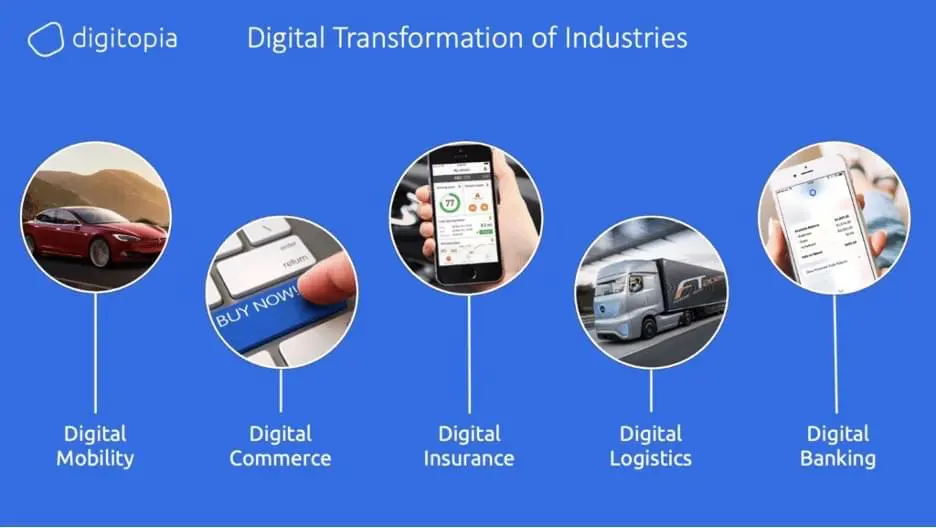
Conclusions
Digital is here to stay.
We ain’t seen nothing yet.
Bill Gates famously said that we usually tend to overestimate the short-term change, and we generally underestimate the long-term impact of technology and trends. This is especially true when it comes to digital transformation.
The steam engine triggered the industrial revolution, starting in the 18th century. And still today we continuously optimize and improve the efficiency of our factories, warehouses, and supply chains. Electricity entered our lives toward the end of the 19th century. Yet, a lot of optimisation and improvement is going on. The same with cars, fridges, homes, cities, farms – the disruption is overwhelming.
Humanity has established a strong foundation of digital capabilities on which to build new services. People are more than willing to use digital services, the economy is embracing new business models, governance structures are trying to maintain order, and with every digital interaction we continuously accumulate vast amounts of data. Analysing all that data will show us where we are and help us to improve the human condition.
Why should you bother?
This affects you as an individual and as an organisation. You’d better know where you are and where you heading on your digital transformation journey. Our Digital Maturity Index service will assure you stay on track, align your leadership team, and accelerate your journey. Sound interesting? Let’s get in touch and we’ll discuss how we can help you. Good luck.
May the digital forces be with you.
Just have a brief look at the United Nations Sustainable Development Goals. Digital can and does help with all17 of these development goals. It is no secret that there is so much inequality around us. There are countless inefficiencies in our human practices. There is so much loss due to lack of control, monitoring, and lack of awareness.
Digital enables access to education, healthcare, knowledge, and public services for anyone with a device. Digital democratises many services usually only available to “the few.” Digital enables people and organisations to get to know each other, to collaborate and work colaboratively on any issue.
Digital enables and increases transparency. Open data initiatives make people’s data available to… the people. Citizen science, open-source software and hardware, the maker movement, and similar digital phenomena are contributing and extending the innovation base from elite labs to the homes of individuals.
This is just the beginning.
When you look at current efficiency levels, waste creates, delays in processes, issues in customer service, public overspending, and other deficiencies. What is the solution to waste? Digital transformation.
In every industry, company, city, and in every nation, digital transformation initiatives are in progress planning huge budgets and allocating. The expected benefits are even greater. So, there is no turning back; there is no giving up.
Digital is good.
This is not just a tech hype or a fad, which will disappear in a few weeks or years. During the next several decades, as it has happened over the last 60-70 years, the world will continue to get more digital every day.
5G, AI, IoT, block chain, robotics, autonomous cars, drones, 3D printing, and many more technologies are getting cheaper, better, faster, and more widespread. Billions of people have not only joined the internet but have turned the internet into a way to consume and produce virtually anything. New of business models, economic approaches, and governance structures fuel innovation every day.
The fourth industrial revolution will continue, especially in manufacturing, supply chains, mining, and oil & gas refineries. Digital transformation in various industries such as retail, banking, insurance, automotive and will continue, even escalate. Enabling digital public services such as healthcare, education, security, surveillance, and citizen services just has only just begun.
Digital is inevitable.

